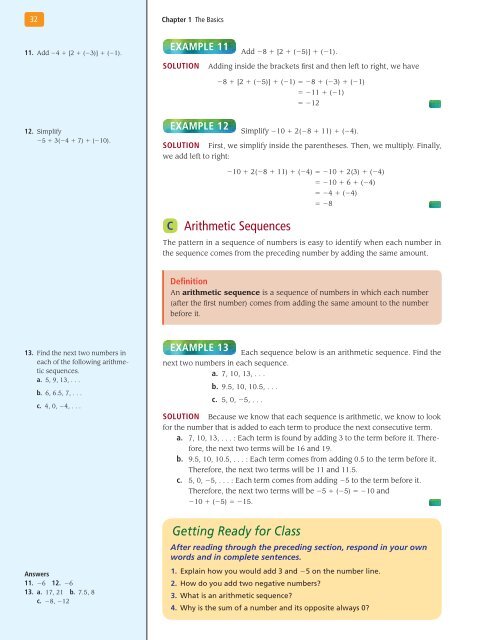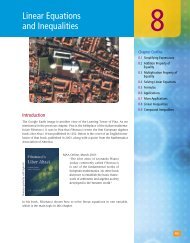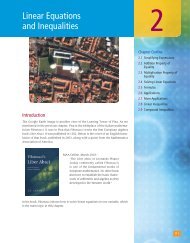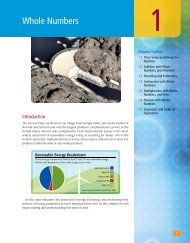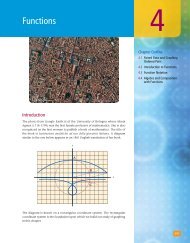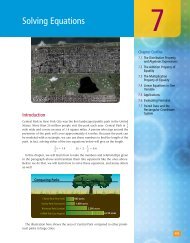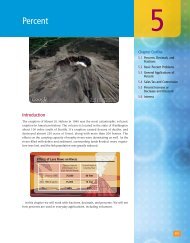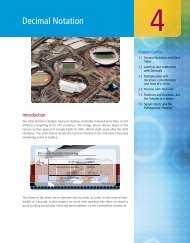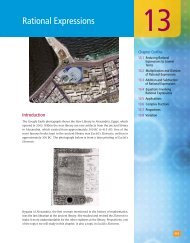Chapter 1 - XYZ Custom Plus
Chapter 1 - XYZ Custom Plus
Chapter 1 - XYZ Custom Plus
You also want an ePaper? Increase the reach of your titles
YUMPU automatically turns print PDFs into web optimized ePapers that Google loves.
32<strong>Chapter</strong> 1 The Basics11. Add −4 + [2 + (−3)] + (−1).Example 11Add −8 + [2 + (−5)] + (−1).SolutionAdding inside the brackets first and then left to right, we have−8 + [2 + (−5)] + (−1) = −8 + (−3) + (−1)= −11 + (−1)= −1212. Simplify−5 + 3(−4 + 7) + (−10).Example 12Simplify −10 + 2(−8 + 11) + (−4).Solution First, we simplify inside the parentheses. Then, we multiply. Finally,we add left to right:−10 + 2(−8 + 11) + (−4) = −10 + 2(3) + (−4)= −10 + 6 + (−4)= −4 + (−4)= −8CArithmetic SequencesThe pattern in a sequence of numbers is easy to identify when each number inthe sequence comes from the preceding number by adding the same amount.DefinitionAn arithmetic sequence is a sequence of numbers in which each number(after the first number) comes from adding the same amount to the numberbefore it.13. Find the next two numbers ineach of the following arithmeticsequences.a. 5, 9, 13, . . .b. 6, 6.5, 7, . . .c. 4, 0, −4, . . .Example 13Each sequence below is an arithmetic sequence. Find thenext two numbers in each sequence.a. 7, 10, 13, . . .Solutionb. 9.5, 10, 10.5, . . .c. 5, 0, −5, . . .Because we know that each sequence is arithmetic, we know to lookfor the number that is added to each term to produce the next consecutive term.a. 7, 10, 13, . . . : Each term is found by adding 3 to the term before it. Therefore,the next two terms will be 16 and 19.b. 9.5, 10, 10.5, . . . : Each term comes from adding 0.5 to the term before it.Therefore, the next two terms will be 11 and 11.5.c. 5, 0, −5, . . . : Each term comes from adding −5 to the term before it.Therefore, the next two terms will be −5 + (−5) = −10 and−10 + (−5) = −15.Getting Ready for ClassAfter reading through the preceding section, respond in your ownwords and in complete sentences.Answers11. −6 12. −613. a. 17, 21 b. 7.5, 8c. −8, −121. Explain how you would add 3 and −5 on the number line.2. How do you add two negative numbers?3. What is an arithmetic sequence?4. Why is the sum of a number and its opposite always 0?


